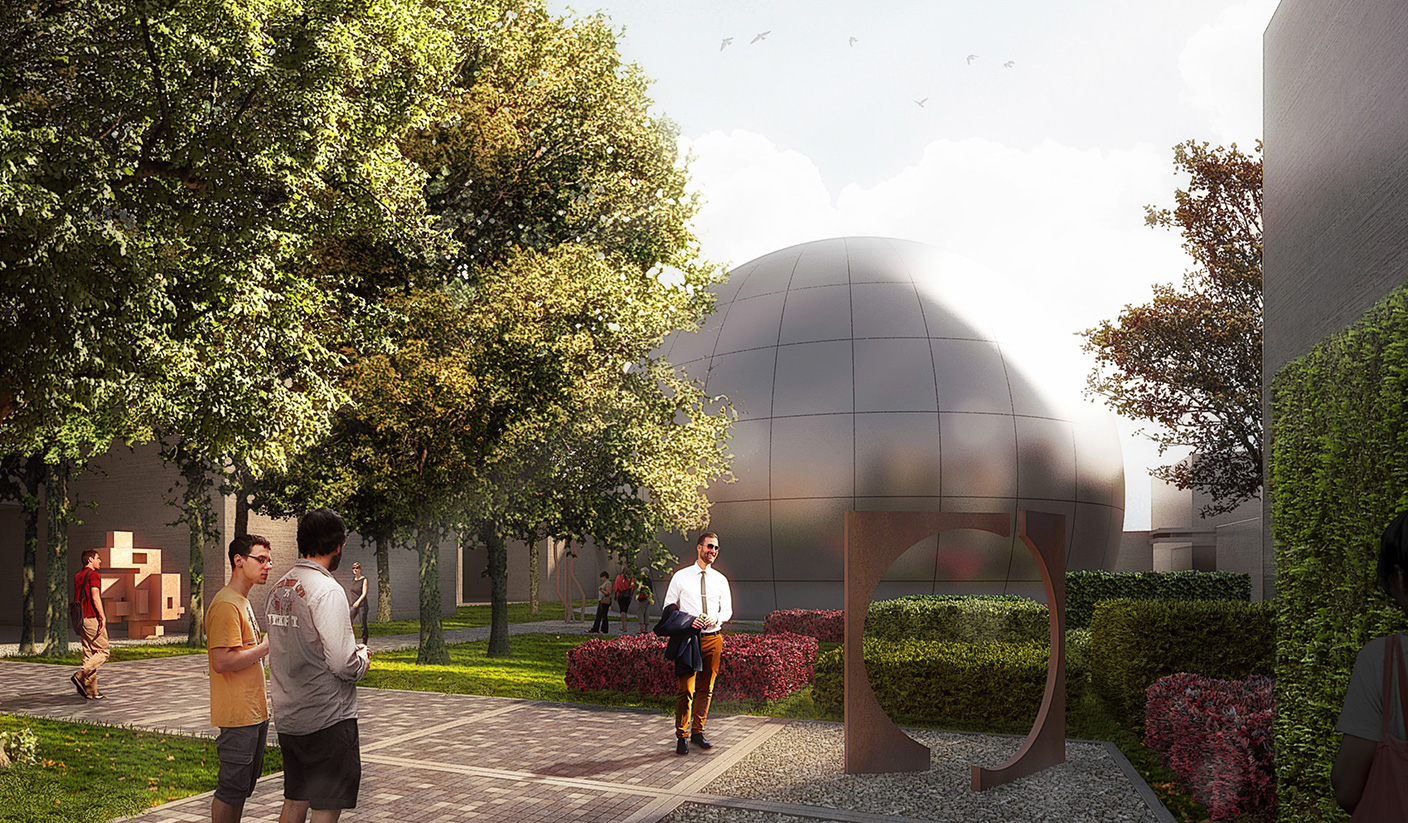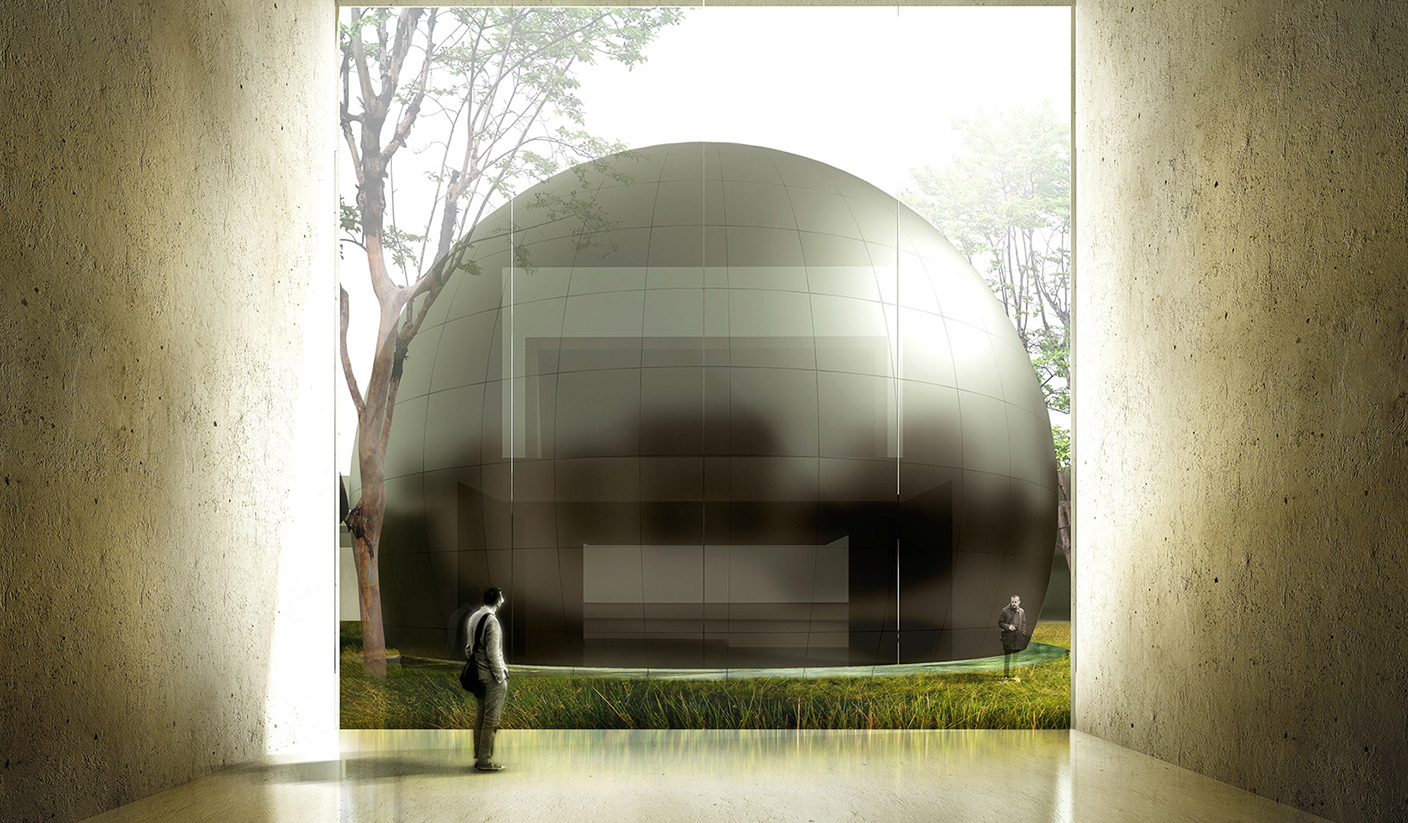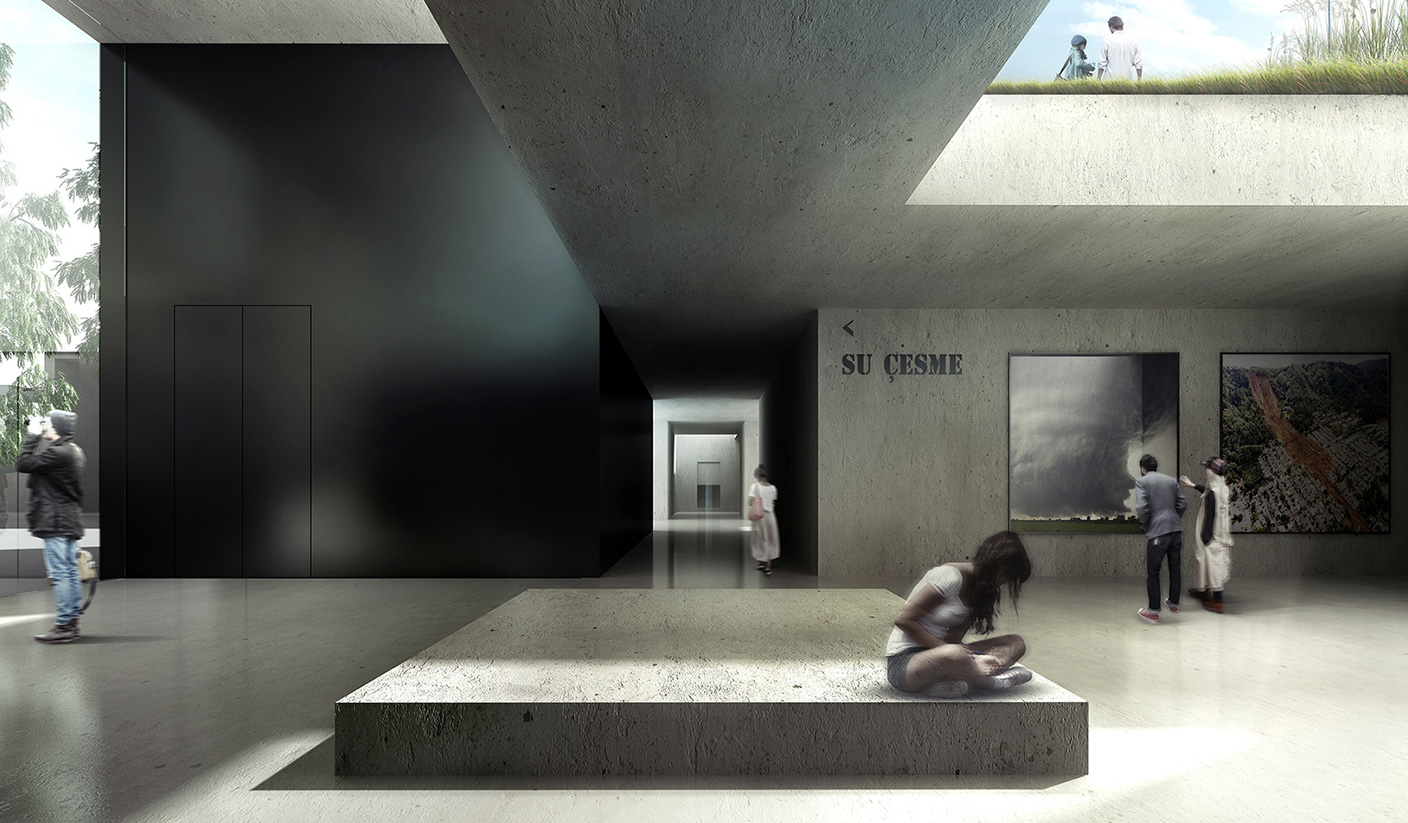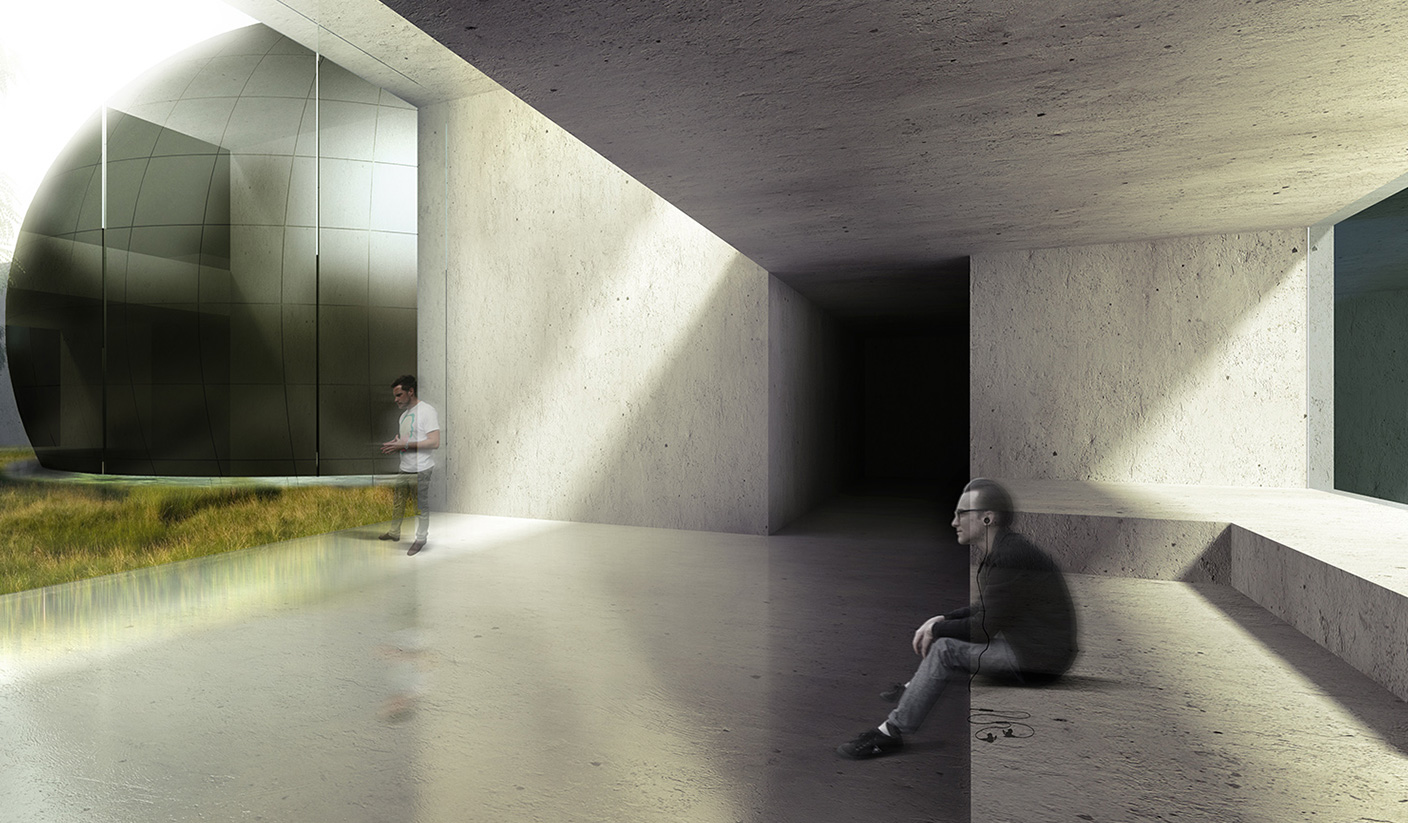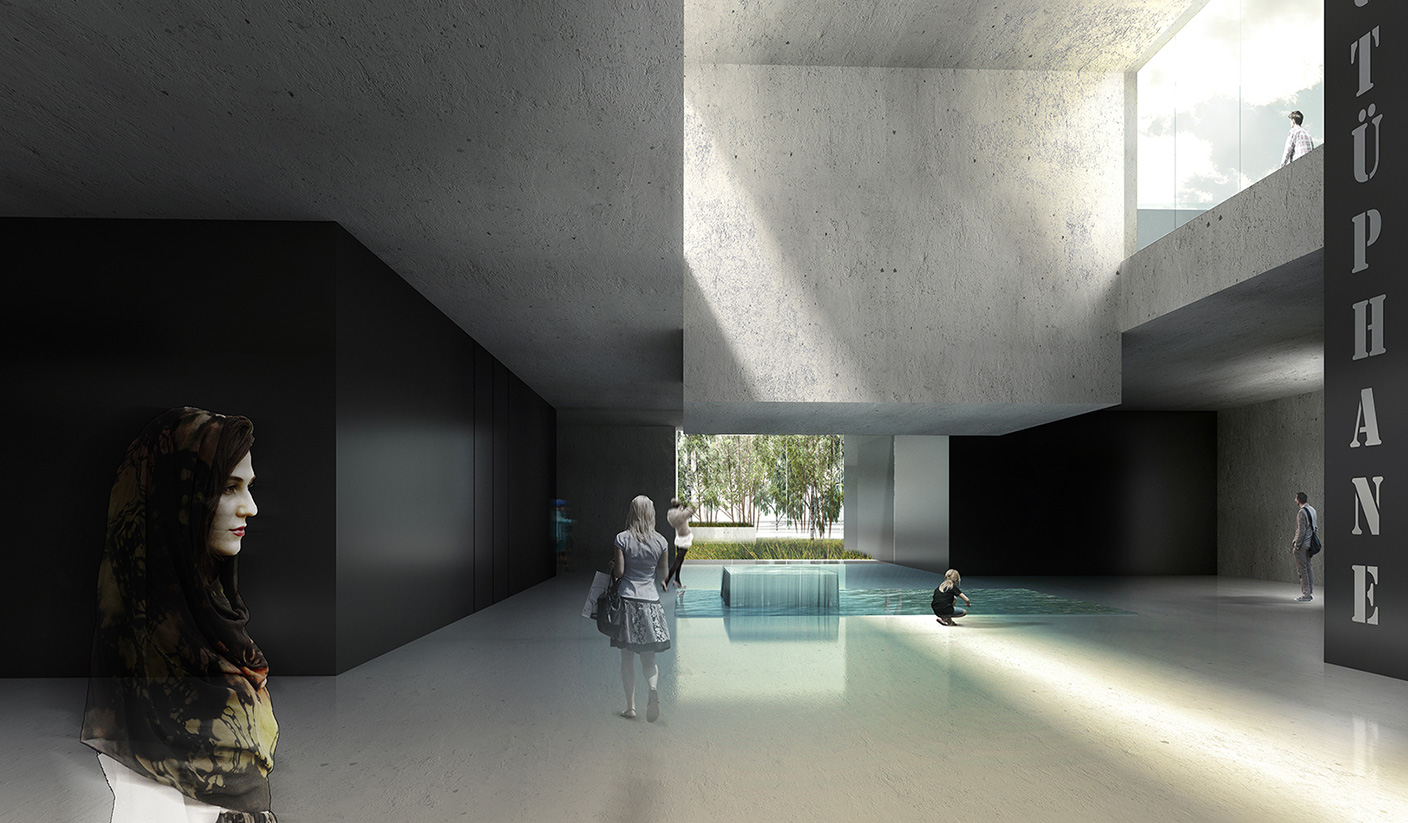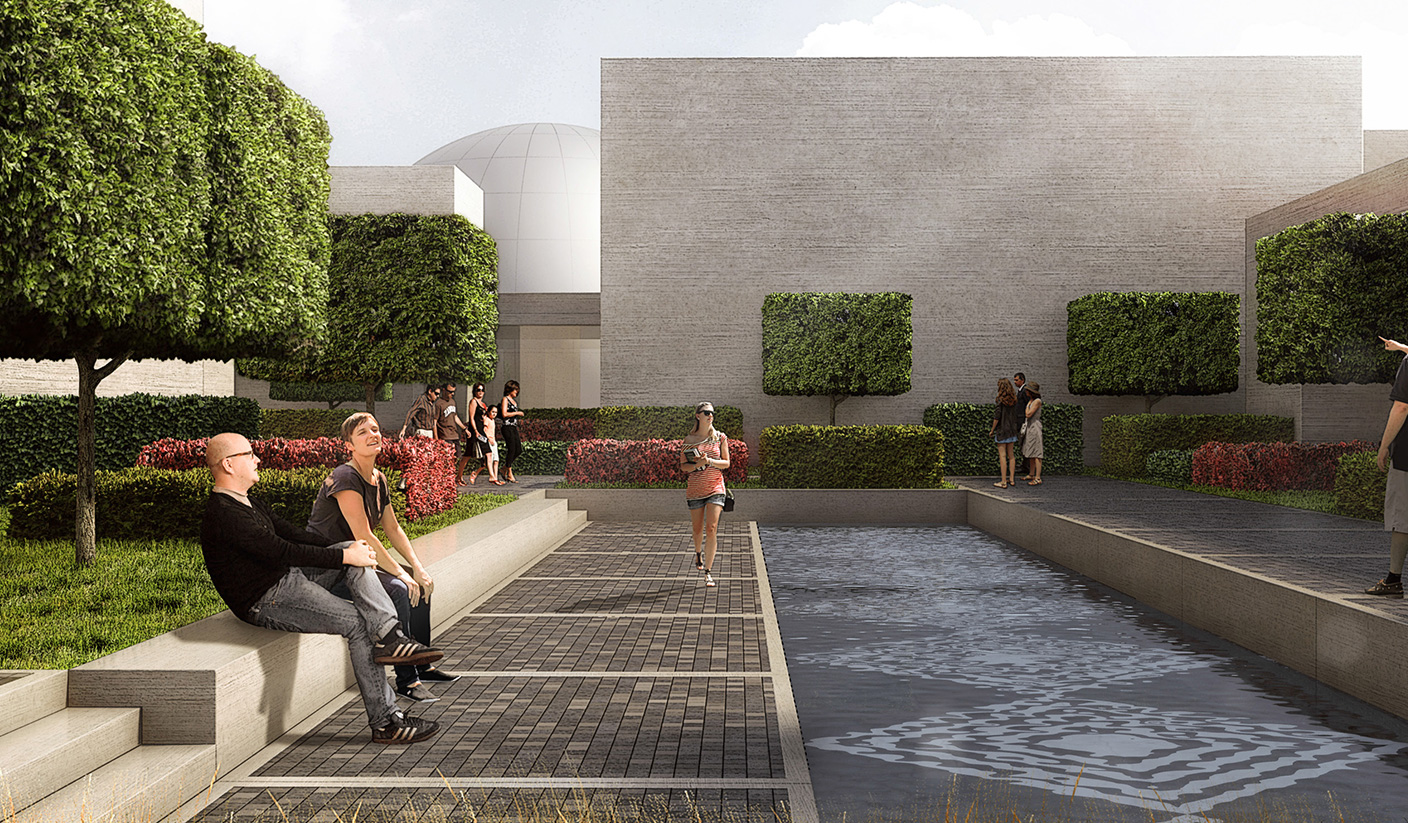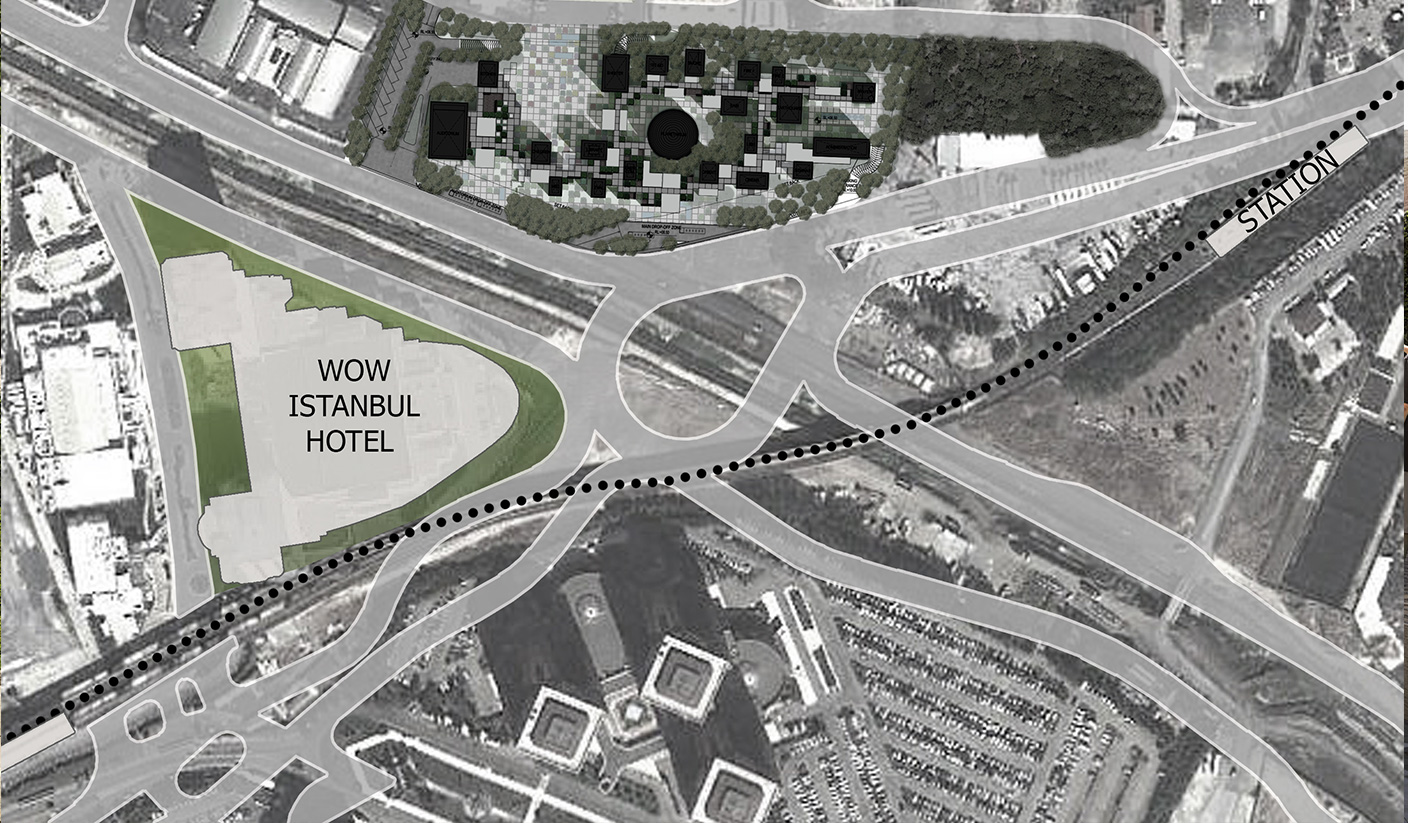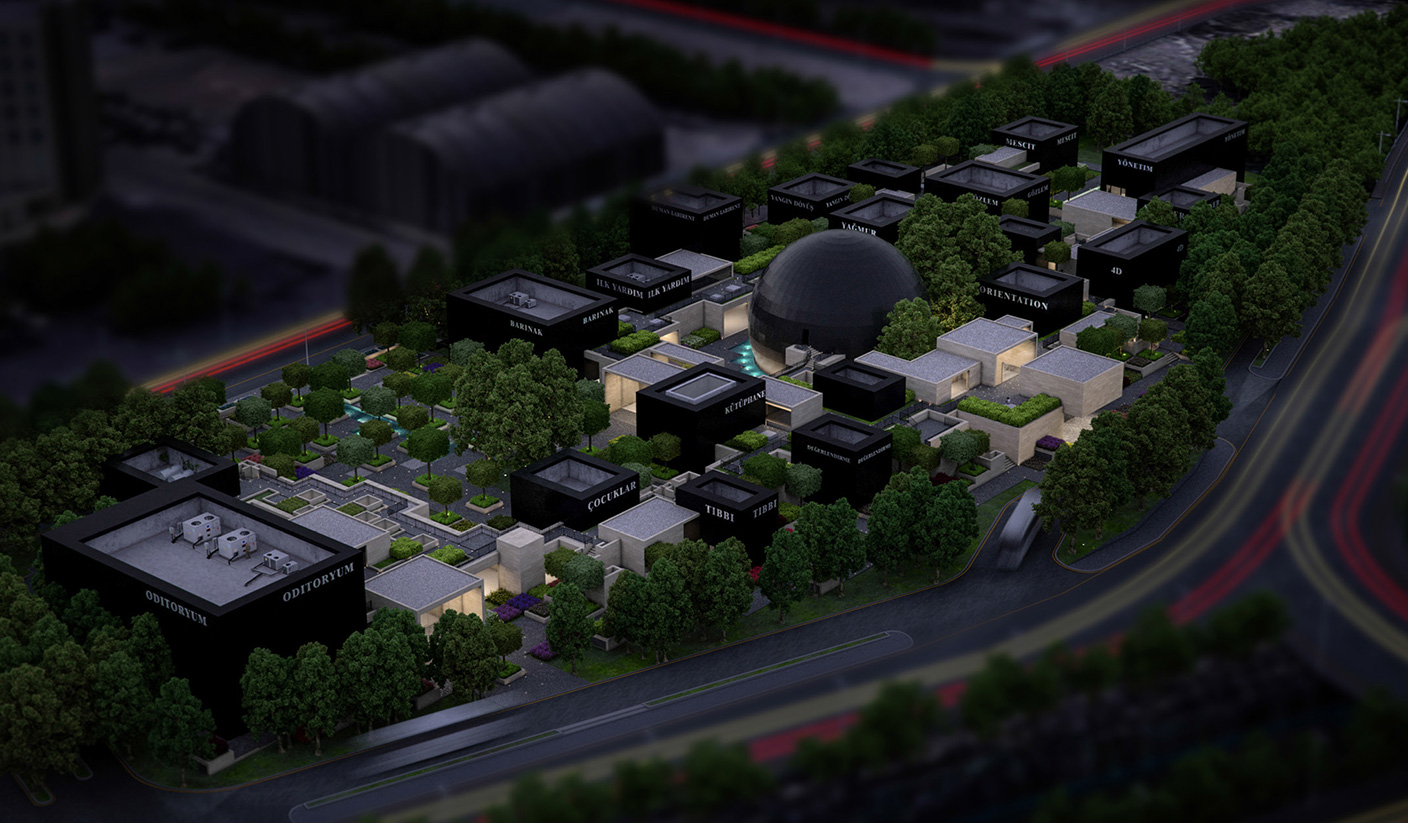Fact Sheet
- Project: Istanbul Disaster Prevention and Education Center
- Category: Public
- Location: Istanbul, Turkey
- Client: Istanbul Metropolitan Municipality
- Built-up area: 18,000 sqm
- Budget: N/A
- Year: 2011-2014
- Status: Third Prize Competition | Execution Drawings
Credits
- Partner in Charge: Ibrahim Berberi
- Architect in Charge: Richard Kassab
- Team: Antony Chemaly, Rony Hobeika, Layal Aoun, Joy Traboulsi, Samer Bazzi, Aline Chahine, Nadine Haraki, Antoune Berberi
Collaborators
- In collaboration with: Structural Consultant: BET Mattar | Electro-Mechanical Consultant: Beemme | Landscape Architect: Imad Gemayel Architects | Lighting Design: Lux Lab | Fire Safety: Socotec | Acoustic: Acoustair Consultants
- Renders: Tony Antoun, Alex Zahn
Disaster prevention is about communication and information. It is all about a reliable network.
The flow of information before a disaster is essential to prepare for effective reactions during and after a catastrophic event. Once a disaster occurs, that same communication network is crucial for assessing the needs of victims in the disaster zone and advising action. It also enables the delivery of moral support to emergency crews under duress. On a more tangible level, a physical network of roads, railways and airports allows supplies and rescue workers to move quickly between the site and safe areas.
The Istanbul Disaster Prevention and Education Centre is defined by these networks. The core elements of the program are functioning structures representing the points where related flows intersect. These nodes are grounded on a pixilated platform, the site, that detects the flows between functions, each landscaped pixel extruding at a varying height to accommodate its unique purpose. Visitors are free to move within the protrusions or above them on an elevated promenade, both paths encouraging exploration of the site from a different perspective.
The corridors leading to and between each pixel create an abstract microcosm of Istanbul. Recognizable elements from the center’s rich urban surroundings – the old souk and Ottoman-era public fountains, among others – are represented in the project’s water elements, in a central space flanked by functions, and high, narrow ceilings that allow light to pour in.
On opposite ends of the plot lie a university and the site of a future mosque, linked to the center by two gardens. One opens to the university, welcoming students and faculty with a lush and colorful public plaza; a smaller, silent garden opens to the future mosque, inviting visitors to pray, meditate or reflect. A third, inner garden hosts a planetarium and offers additional space for indoor exhibitions. The nodes / black boxes scattered across the project have a strong visual identity and can be adapted to any location, in the center of any town or village. Connected wirelessly to the site, they foster education before a disaster, efficiency during and support after. The network created can expand well beyond the site, reaching across Istanbul and the rest of the world.
The Istanbul Disaster Prevention and Education Centre is defined by these networks. The core elements of the program are functioning structures representing the points where related flows intersect. These nodes are grounded on a pixilated platform, the site, that detects the flows between functions, each landscaped pixel extruding at a varying height to accommodate its unique purpose. Visitors are free to move within the protrusions or above them on an elevated promenade, both paths encouraging exploration of the site from a different perspective.
The corridors leading to and between each pixel create an abstract microcosm of Istanbul. Recognizable elements from the center’s rich urban surroundings – the old souk and Ottoman-era public fountains, among others – are represented in the project’s water elements, in a central space flanked by functions, and high, narrow ceilings that allow light to pour in.
On opposite ends of the plot lie a university and the site of a future mosque, linked to the center by two gardens. One opens to the university, welcoming students and faculty with a lush and colorful public plaza; a smaller, silent garden opens to the future mosque, inviting visitors to pray, meditate or reflect. A third, inner garden hosts a planetarium and offers additional space for indoor exhibitions. The nodes / black boxes scattered across the project have a strong visual identity and can be adapted to any location, in the center of any town or village. Connected wirelessly to the site, they foster education before a disaster, efficiency during and support after. The network created can expand well beyond the site, reaching across Istanbul and the rest of the world.

